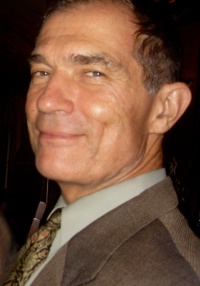Wednesday
Dharma TeachingsThe Path of Goodness
Interview with Acharya John Rockwell
by Will Brown
Shambhala Times Column Editor
I recently had the extreme good fortune to interview Ashe Acharya John Rockwell for the Shambahala Times column “In Everyday Life”. Of course, being infinitely curious and having the rare opportunity to interview an Acharya, I couldn’t limit my inquiry to just ordinary magic. And so I snuck in a few questions about the dharma and our beloved Shambhala path. For a previous interview with him, please click here.
Acharya Rockwell’s current position was originally created by the Sakyong to enable Shambhala training and Vajradhatu Practice and Study, as he says, “to work together, to create one path that would weave together the Shambhala and Buddhadharma rather than being separate tunnels to infinity.” As the curriculum has continued to evolve, Acharya Rockwell has held the view of joining tradition and innovation for the benefit of all. “It used to be that in the past you had to figure that out yourself… Shambhala training was viewed as a stand-alone path, separate from the path of the buddhadharma. Now we’ve made it very clear that if people would like to get the heart of our path, it’s best to weave them both together and get the full transmission.”
As I personally consider Shambhala in everyday life, I seem to continually grasp for technique, as though skillful means to creating enlightened society are some mysterious practice. So rather than asking directly, “how do we live by the Shambhala principles?” I asked the Acharya to speak to this from the angle of outer, inner, and secret. I feel a bit like I got slapped with a sandal.
At the outer level Acharya Rockwell says, “Just the act of seeing, hearing, smelling, tasting and touching is the essential expression of basic goodness. This magic capability allows us to experience reality directly and nonconceptually, and it can pierce our heart!”
He went on to explain that at the inner level, “In our relationships, we’re sharing dynamic worlds with each other, which is a vehicle for expressing and understanding each others basic goodness. If we can soften up and be honest about our vulnerability and not blame others, that’s also access to basic goodness because it opens the other person as well.”
The secret level of basic goodness the Acharya described, “is learning how to relax and just be. We don’t have to do anything to access the secret. In fact the secret informs how we work with the outer and inner. Fundamentally we don’t have to manipulate our experience in any way. The secret is the “open secret” and its found with the outer and with the inner or… you could just be secret with it.”
When I asked how one might explore their own practice, the Acharya pointed towards a very uncomplicated approach. “The basic question is what am I experiencing right now? and not judging. Not trying to make it go away or transmute anything.” He further went on to elaborate that the Sakyong has been, “emphasizing the quality of feeling… [and] some of us have a tendency to think our way to now, which doesn’t seem to work too well. But the nice thing about feeling is that you feel from the inside. There is an outer and inner feeling at the same time.” So, he says, “I think it’s good to check in and feel what’s happening right now.” It’s not just about physical sensation, it’s about what’s happening in our mind and heart and energetic body.
 In preparing for my interview, my eyes had fallen upon my copy of The Mishap Lineage by Chogyam Trungpa Rinpoche. I was, of course, interested in the passage about “constant mishap” and how that might correlate with Shambhala and it’s seemingly, recurrent state of “transition”. However, another passage seemed to leap out at me, “… that sense of celebration became an important part of the Surmang tradition. People were constantly having feasts, and they receive a sense of delight from their teacher and an appreciation for what was happening.”
In preparing for my interview, my eyes had fallen upon my copy of The Mishap Lineage by Chogyam Trungpa Rinpoche. I was, of course, interested in the passage about “constant mishap” and how that might correlate with Shambhala and it’s seemingly, recurrent state of “transition”. However, another passage seemed to leap out at me, “… that sense of celebration became an important part of the Surmang tradition. People were constantly having feasts, and they receive a sense of delight from their teacher and an appreciation for what was happening.”
“Celebration,” Acharya Rockwell exclaimed, “I think that’s just our basic nature. If we actually let go of this self-created burden that we’re carrying, it’s delightful, joyful. We could take joy in the ordinariness of our life… So, anytime you look at something, or feel something, it has tremendous depth to it.” The Acharya desribed this as “just a matter of appreciation on the spot.” We don’t have to wait for a special moment to celebrate, we could just celebrate the moment we’re in. Even if it seems threatening, we could still bring our heart to it. Even what seems to be a threat to our life, there could be appreciation of the fact we are alive to enjoy that moment even if it’s our last one.
In conclusion, Acharya Rockwell shared, “I think the warriors approach is that it’s a good day to die, or a good moment to die. Which is not an expression of just that moment, but of the totality of one’s whole life at that moment, there is a willingness to let go.”
Read more about Acharya Rockwell here.
~~
Want to delve more deeply into the everyday life of one of your Shambhala friends? Contact Will Brown with your story lead or interview, and we’ll publish your story.





